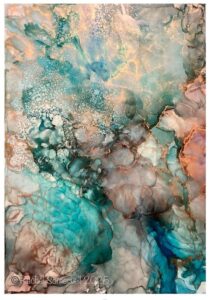Stepping into your very first ink painting class, or 酒精墨水畫課程, can feel a bit like opening a brand new box of chocolates—you’re not quite sure what flavors you’ll uncover, but there’s a definite thrill in the unknown. Walking through that studio door, you’ll see rows of inky bottles lined up like a rainbow parade, watercolor papers stacked neatly, and brushes that look almost too pretty to dip in vibrant hues. Don’t worry if you’ve never held anything but a Sharpie until now—every single person in that room started somewhere. Click here!

To kick things off, expect to learn a little about your ink’s personality. Alcohol inks have a mind of their own—running, blooming, blending in wild, unexpected ways. It’s less “paint by numbers,” more happy accidents and letting go of control. Your teacher will probably encourage you to embrace the chaos. First-timers often spend their first hour just playing. Drip. Tilt. Swirl.
There’s usually a brief safety talk. Alcohol inks need proper ventilation because fumes can pack a punch. Think open windows, a fan, and maybe a splash of fresh air now and then. Aprons are a must unless you like the idea of tie-dyeing your favorite t-shirt.
Technique-wise, you’ll start simple. Dropping ink onto paper and watching it spread—honestly, it’s strangely hypnotic. A spritz of alcohol, a puff of air, even a straw—these ordinary tools become wands. Your instructor might show you how to create dreamy gradients or make those signature ink “cells,” where the color seems to pool and break in organic ways.
You’ll probably hear classmates sharing tips. “Use less ink at first, it travels fast!” “Blow gently, or it gets everywhere.” One trick: tape your paper down. Ink can take your artwork for an unexpected ride, and you don’t want a masterpiece sailing across the table.